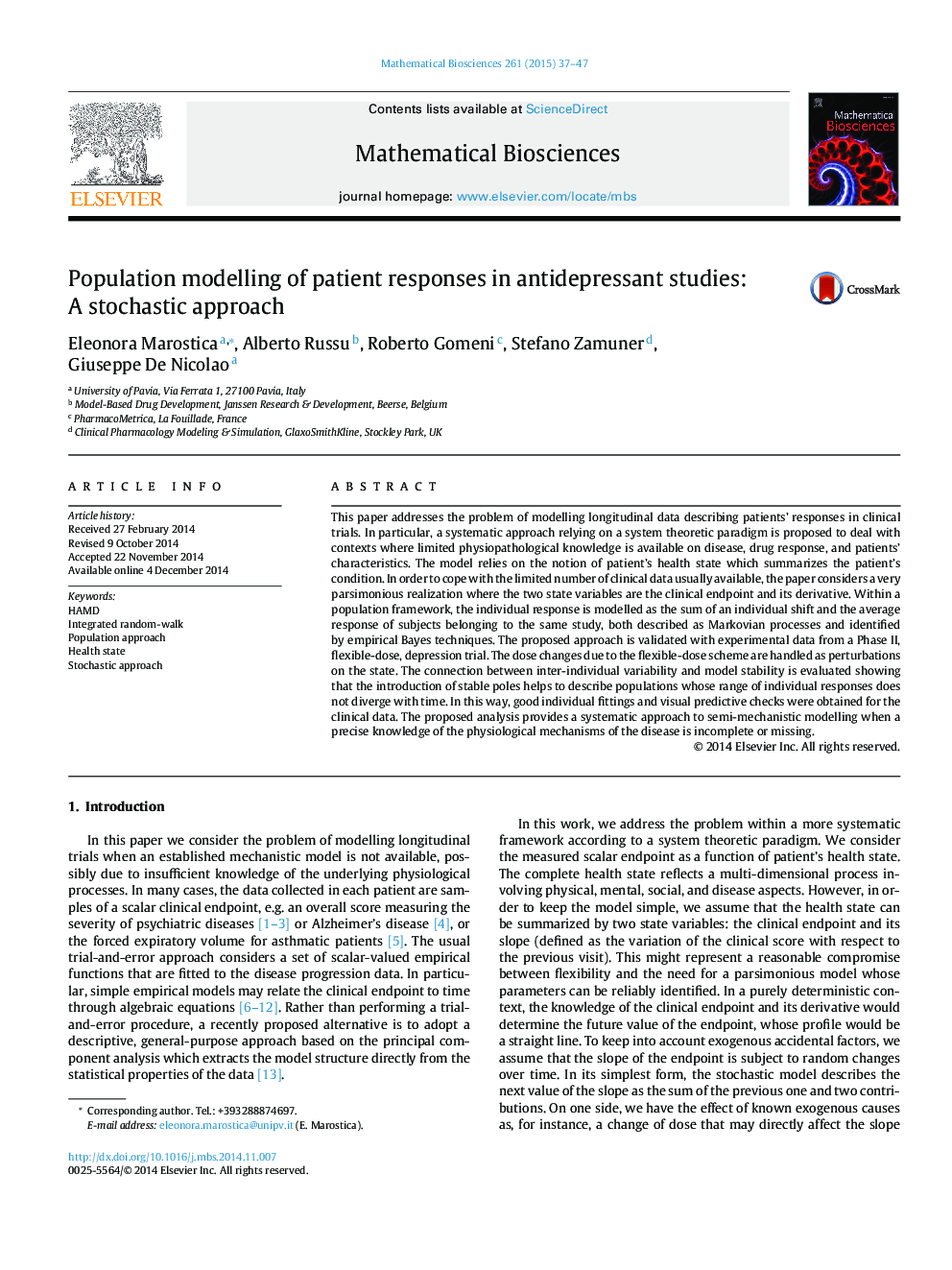| Article ID | Journal | Published Year | Pages | File Type |
|---|---|---|---|---|
| 4499967 | Mathematical Biosciences | 2015 | 11 Pages |
•Stochastic modelling of HAMD responses in depression trials.•Patients’ responses can be described as realizations of stochastic processes.•Psychiatric trials call for general-purpose, non-mechanistic modelling approaches.•Empirical Bayes techniques can successfully estimate individual parameters.•Stable Markovian process gives a realistic description of interindividual variability.
This paper addresses the problem of modelling longitudinal data describing patients’ responses in clinical trials. In particular, a systematic approach relying on a system theoretic paradigm is proposed to deal with contexts where limited physiopathological knowledge is available on disease, drug response, and patients’ characteristics. The model relies on the notion of patient’s health state which summarizes the patient’s condition. In order to cope with the limited number of clinical data usually available, the paper considers a very parsimonious realization where the two state variables are the clinical endpoint and its derivative. Within a population framework, the individual response is modelled as the sum of an individual shift and the average response of subjects belonging to the same study, both described as Markovian processes and identified by empirical Bayes techniques. The proposed approach is validated with experimental data from a Phase II, flexible-dose, depression trial. The dose changes due to the flexible-dose scheme are handled as perturbations on the state. The connection between inter-individual variability and model stability is evaluated showing that the introduction of stable poles helps to describe populations whose range of individual responses does not diverge with time. In this way, good individual fittings and visual predictive checks were obtained for the clinical data. The proposed analysis provides a systematic approach to semi-mechanistic modelling when a precise knowledge of the physiological mechanisms of the disease is incomplete or missing.
